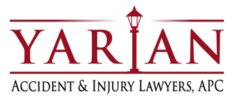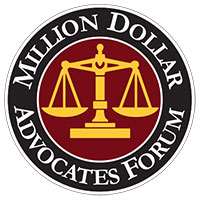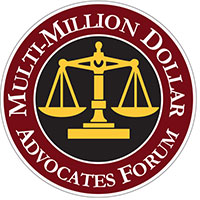Burbank Helicopter Accident Lawyer
After commercial airplanes, helicopters are probably the most widely accessible types of aircrafts out in public. However, helicopters, are also some of the most dangerous aircrafts out there. Especially, when you are aboard a commercial helicopter, the individuals in charge of managing it need to be cautious to the operation of it. If you suffered injuries or lost a loved one during a helicopter accident, seek our skilled personal injury lawyers immediately.

Burbank Helicopter Accidents Attorney
Helicopter accidents are knowingly more dangerous than a lot of other aircrafts, so special maintenance and safety procedures must be taken into account for helicopters. A helicopter company may be liable if their helicopter pilot made a negligent decision pre-flight, during flight, or when landing. A personal injury attorney can file a lawsuit on your behalf if you were the victim of a helicopter accident.
At Yarian Accident & Injury Lawyers, APC, our attorneys are dedicated to help you recover for rightful compensation. We understand a helicopter accident is a traumatic experienced. You may be feeling alone paying for hospital bills after the helicopter accident. We will not settle until we hold the responsible party accountable.
Call at (818) 459-4999 to schedule a consultation or fill out a free case review form on our website.
Overview of Helicopter Accidents
- What makes a helicopter different from other aircrafts?
- Dangers of a Helicopter vs. Other Aircrafts
- Special Training for Helicopters
- Liability in Helicopter Accidents
- Additional Resources
What Makes a Helicopter Different From other Aircrafts?
Unlike airplanes, which use wings, helicopters use a set of rotating blades to fly. Additionally, helicopters:
● Don’t need a runway;
● Hover in the air;
● Rotate at a 360° degree angle;
● Use Airfoil technology to generate lift;
● Use a Turbo shaft engine; and
● Can fly forward, backwards, around, and to the side.
Helicopters are not used to travel long distances, as planes prove to be much faster at flying from point A to point B. Instead, helicopters are meant to circulate in an exact place or area in the air. Helicopters are primary used for the following circumstances:
● Aerial surveillance (city, state, and federal entities)
● Aerial video footage (newspaper, news channel, other media sources)
● Land/Water rescue
● Medical assistance
● Traveling short-distances within city limits
● Tourist rides
Dangers of a Helicopter vs. Other Aircrafts
The dangers of a helicopter being at the fact that helicopters are often flying during precautious, time-sensitive situations which requires not only expertise but a high level of focus and composedness, as opposed to other aircraft pilots. Most of the time helicopters are not even landing on a Heli-pad, and instead are landing on the most readily available clear terrain. The following factors are more likely to affect a helicopter pilot during real-time flying:
● Weather (i.e., rain, snow, windy, cloudy, sun glare)
● Surrounding structures (i.e., trees, buildings, electric cables, cellphone towers)
● Bird Strikes
● Body of Water
Special Training for Helicopter
As provided by 14 CFR §61.109, a private pilot certificate with rotorcraft category and helicopter class rating must log at least 40 hours of flight time that includes at least 20 hours of flight training from an authorized instructor and 10 hours of solo flight training, and the training must include at least:
● 3 hours of cross-country flight training in a helicopter;
● Except as provided in §61.110 of this part, 3 hours of night flight training
● 3 hours of flight training with an authorized instructor in a helicopter in preparation for the practical test, which must have been performed within the preceding 2 calendar months from the month of the test; and
● 10 hours of solo flight time in a helicopter
As provided by 14 CFR §61.129, a commercial pilot who applies for a commercial pilot certificate with a rotorcraft category and helicopter class rating must log at least 150 hours of flight time as a pilot that consists of at least:
● 100 hours in a powered aircraft, of which 50 hours must be in helicopters.
● 100 hours of pilot-in-command flight time
● 20 hours of training on the areas of operation listed in §61.127(b)(3)
● Ten hours of solo flight time in a helicopter or 10 hours of flight time performing the duties of pilot in command in a helicopter with an authorized instructor on board
Liability in Helicopter Accidents
Helicopter pilots have more freedom but also more responsibility to make the proper choice when and where to land or take off. Because helicopters are often demanded for dangerous situations, they can fly in less than desirable circumstances and land in otherwise non-advisable for flying surfaces (i.e., near water, buildings, or mountains).
14 CFR §91.159 gives the same freedom to helicopters as it would to powered parachutes or weight-shift-control aircrafts to fly at less than 500ft/1000ft from uncongested/congested areas provided it is safe to do so.
Helicopters have special authorizations that would otherwise not be given to other aircrafts. Helicopters can operated in IFR (Instrument Flight Rules), VFR (Visual Flight Rules), and Special VFR (in clouds) and both in air-controlled space and uncontrolled air space (with or without communication with Air Traffic Control (ATC)) or in G space, all dependent on the situation.
For helicopter pilots, it not only requires experience but a sense of critical thinking, even when coming close the ground. For example, Helicopters flying in G space hoping to do an emergency landing at an airport runway, for example, are told to avoid the flow of fixed-wing aircrafts (planes), and may otherwise have to land in unconventional methods.
Liability in helicopter accidents is handled on a case-by-case basis. Government liability involving helicopters flown by public entities, either during a rescue or an arrest may be dealt with differently, and require you to submit an administrative claim according to the government statute of limitations.
Commercial helicopter accidents flown for work or for tourism can be filed directly against the helicopter company for the pilot’s negligence. Product liability can also come into play if the airplane system’s negligent design or manufacturing contributed to the failure of the airplane system.
Los Angeles County Helicopter Accidents Lawyer
Helicopter accidents can change the lives of survivors or individuals who lost a loved one that was aboard the helicopter. However, helicopter accidents are inevitable, and the negligence of the helicopter company or its pilot may be liable for causing you physical and mental distress. Our attorneys at Yarian Accident & Injury Lawyers, APC are determined to fight for rightful compensation on your behalf.
You should not have to pay for damages for a helicopter accident that was not your fault. Our attorneys have experience working with individuals whose injuries and loss have been neglected. Recovery for damages can help you begin to piece your life back together.
You only have a limited amount of time to file for a personal injury suit, so do not wait. Schedule a consultation by calling (818) 459-4999.
Yarian Accident & Injury Lawyers Burbank Office
700 N Central Ave Suite 470
Burbank, CA 91203
(818) 459-4999
Additional Resources
National Air Transportation Association | Air Traffic Control – The National Air Transportation Association (NATA) oversees all air traffic control systems inside the United States. To get information involving air traffic control systems and their connecting to helicopters click on the page.
The United States Helicopter Safety Team (USHST) | Helicopter Accident Statistics – The United States Helicopter Safety Team (USHST) provides statistics involving helicopter accidents up until 2019. The USHST did accomplish a 4-year goal of having a reduction in helicopter accidents by the year 2020.








